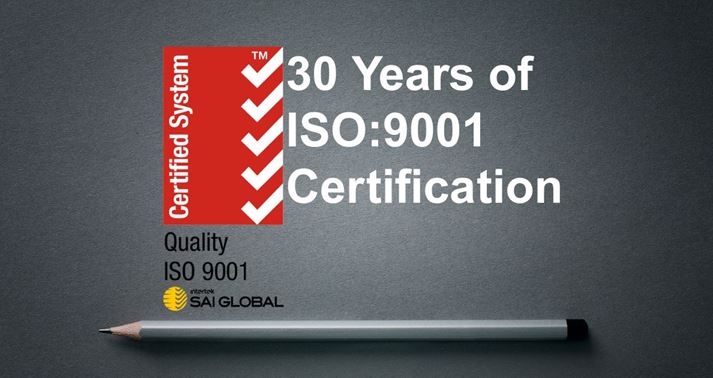How to Structure Winning Responses in Behavioural Interviews with the Right Technique
13 February, 2025

Behavioural interview questions are a key part of the hiring process across many sectors, and they’re not going away any time soon. Whether you’re applying for a leadership role in government, a frontline position in aged care, or a professional opportunity in early childhood education or commercial services, employers want to understand how you’ve handled real-life situations and responsibilities in the past, using the logic that past behaviour is a strong indicator of future performance.
At McArthur, with over 55 years of recruitment expertise across Australia, we support professionals in preparing for every stage of the job search process - and that includes mastering behavioural interview techniques. This article compares the three most effective methods - STAR, SHER, and SHARE - so you can choose the best approach to highlight your experience, capabilities and values.
Why Behavioural Interview Techniques Matter
Behavioural questions are designed to assess key competencies such as communication, problem-solving, adaptability and leadership by asking how you’ve behaved in specific work situations. These questions typically start with:
- “Can you walk me through a time when…”
- “Share an experience where you had to…”
- "Describe a time when you..."
According to an article from SEEK, job seekers who answer behavioural questions using structured storytelling frameworks are more likely to leave a strong impression and communicate their value more effectively to hiring managers. Preparation, structure and relevance are essential — and that’s where methods like STAR, SHER and SHARE come in.
The STAR Method: Clear and Proven
The STAR method stands for Situation, Task, Action, and Result. It is the most widely used approach for answering behavioural interview questions and is highly effective for delivering structured, concise responses.
- Situation: Describe the context or background.
- Task: Explain your responsibility or goal.
- Action: Outline the steps you took.
- Result: Share the outcome of your actions.
The STAR method is ideal for professionals across all industries who want to deliver clear, results-focused answers. According to SEEK, using STAR allows candidates to "showcase your skills, adaptability and critical thinking" through well-organised examples that speak directly to the role requirements.
At McArthur, we frequently advise candidates to prepare 5–7 STAR examples in advance of their interviews, each highlighting a different core competency or workplace scenario relevant to the position.
The SHER Method: Highlighting Problem-Solving and Decision-Making
The SHER method - Situation, Hindrance, Exploration, Result - is an alternative that adds more depth to your storytelling by focusing on how you overcame obstacles and explored different solutions. This is particularly effective in situations where emotional intelligence, critical thinking and stakeholder management are key.
- Situation: Set the scene.
- Hindrance: Define the barrier, conflict or challenge.
- Exploration: Detail the thought process, options considered and strategies used.
- Result: Summarise the outcome.
This method is gaining recognition from global career advisors, particularly in leadership, human services and complex care roles, where decision-making is rarely black-and-white. It gives you space to demonstrate how you think through challenges and consider multiple perspectives before acting.
Using SHER in an interview allows you to show more than just outcomes - it allows you to demonstrate professional maturity, reflection, and the ability to weigh up competing priorities.
The SHARE Method: Adding Reflection and Growth
The SHARE method builds on STAR by including an Evaluation component at the end, prompting the candidate to reflect on what they learned and how they’ve applied that learning since. The steps include: Situation, Hindrance, Action, Result, and Evaluation.
This method is especially valuable for roles where self-awareness, personal development and reflective practice are valued - such as health, early childhood education, counselling and social work. It’s a powerful way to demonstrate not only what you’ve done but how you’ve grown from the experience.
Frontline and care-based sectors, in particular, appreciate candidates who can evaluate outcomes, acknowledge learning curves, and demonstrate a commitment to continuous improvement. SHARE empowers you to tell a well-rounded story that aligns with values-based hiring.
Choosing the Right Method for You
While all three techniques are effective, selecting the right one depends on the role you’re applying for and how you communicate best. At McArthur, we encourage professionals to:
- Use STAR for most professional and technical roles where results and clarity are key
- Use SHER when the question calls for nuanced thinking or managing sensitive challenges
- Use SHARE to demonstrate your ability to reflect, grow and bring learnings into new roles
No matter which method you use, what matters most is relevance and authenticity. Employers want to hear your real experiences - not rehearsed scripts. Keep your examples specific, focus on your role and impact, and remember to align your answers with the core skills required for the job.
Final Advice from McArthur
Behavioural interviews are your opportunity to tell your professional story - and how you tell that story matters. Whether you use STAR, SHER or SHARE, structuring your answers with intent will help you stand out as a capable, thoughtful and well-prepared candidate.
At McArthur, our recruitment consultants work closely with professionals across Australia to build interview confidence and develop compelling career narratives. We offer tailored coaching, sector-specific insights and the support you need to succeed.
Visit McArthur website to explore current roles and connect with a recruitment specialist who understands your industry.
Share this Article
Related Articles
Why Adaptability Skills Matter Now More Than Ever to Future Proof Your Career in Australia
Adaptability is now a must-have skill for career success in Australia. Learn why it matters, how to strengthen it, and how McArthur’s recruitment consultants can help you stay competitive in today’s evolving job market.
Learn MoreMcArthur Celebrates 30 Years of ISO 9001 Certification
In June 2025, McArthur proudly marks 30 years of ISO 9001 certification, a milestone that reflects our commitment to quality, consistency, and continuous improvement in recruitment and HR services across Australia. Three decades strong, and still evolving.
Learn MoreWhy Soft Skills Matter More Than Ever in the Age of AI and Automation
As AI transforms the workplace, soft skills remain your most powerful career asset. Discover why communication, empathy and adaptability still matter in every industry - and how McArthur’s recruitment experts can help you grow, stand out, and stay future-ready.
Learn MoreHow to Structure Winning Responses in Behavioural Interviews with the Right Technique
Behavioural interviews are key to landing your next role, and how you answer makes all the difference. Explore the STAR, SHER and SHARE techniques to structure strong, confident responses and discover which method best highlights your professional strengths.
Learn More



